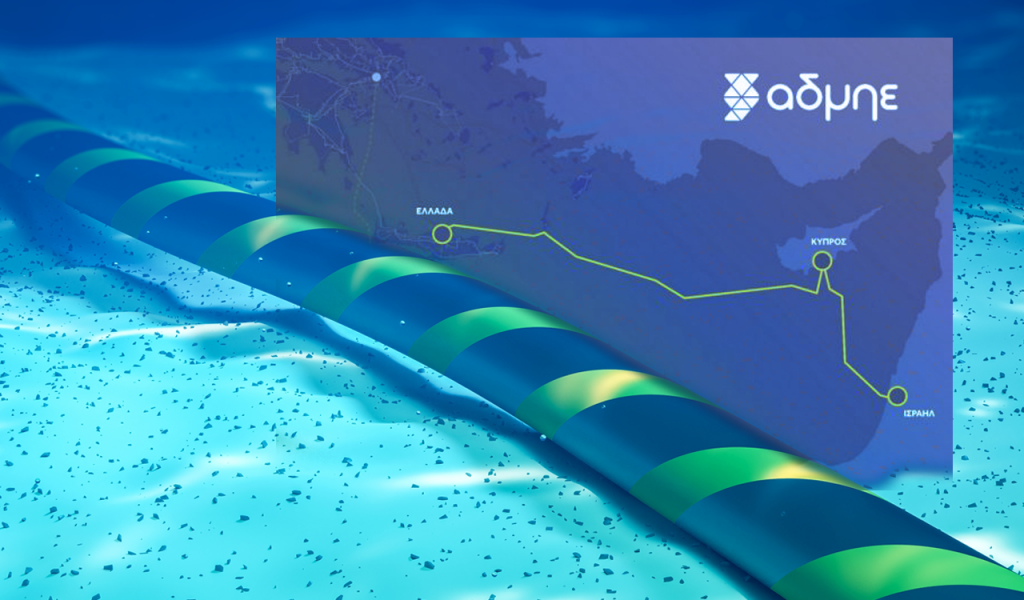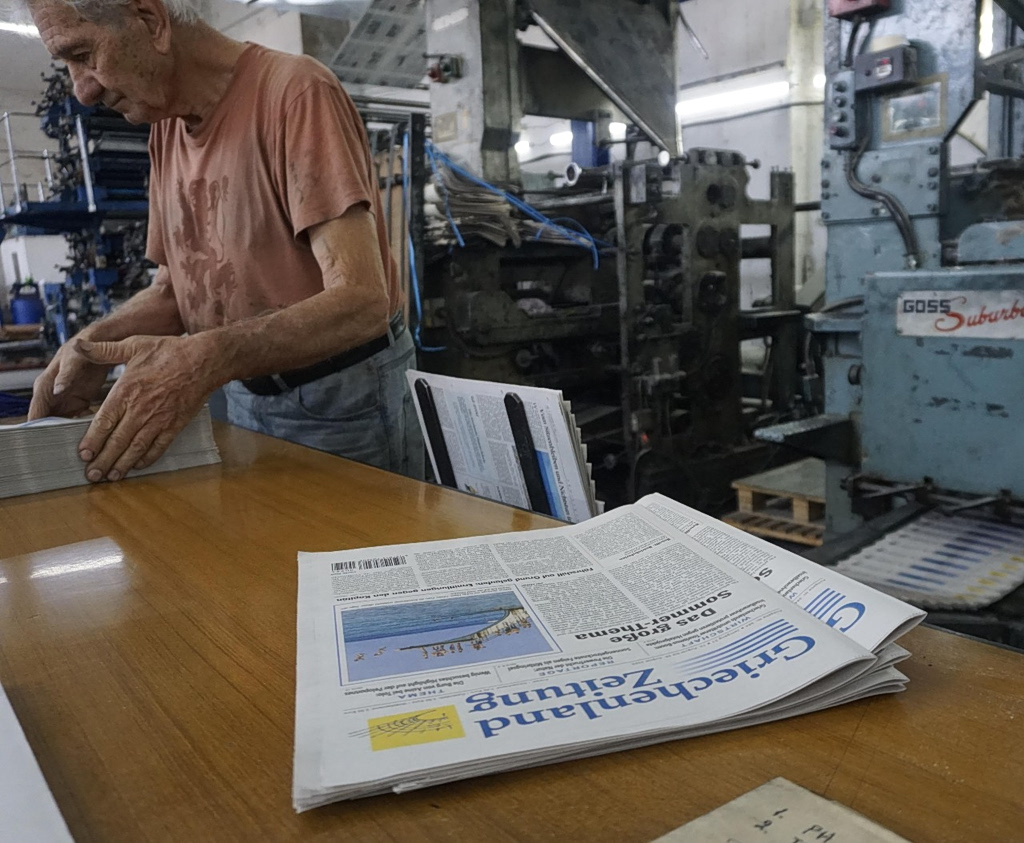“We knew from the start that implementing the Greece-Cyprus-Israel electricity interconnection would be no easy task,” said Manos Manousakis, President and CEO of the Independent Power Transmission Operator (IPTO). His statement reflects the immense challenges faced by this landmark and geopolitically crucial project, which holds particular significance for Cyprus.
Manousakis’ comment follows nearly five years of IPTO’s involvement as the sole shareholder in the project’s implementing entity, the Great Sea Interconnector. However, the idea for the Greece-Cyprus electricity interconnection, later expanded to include Israel, dates back 14 years.
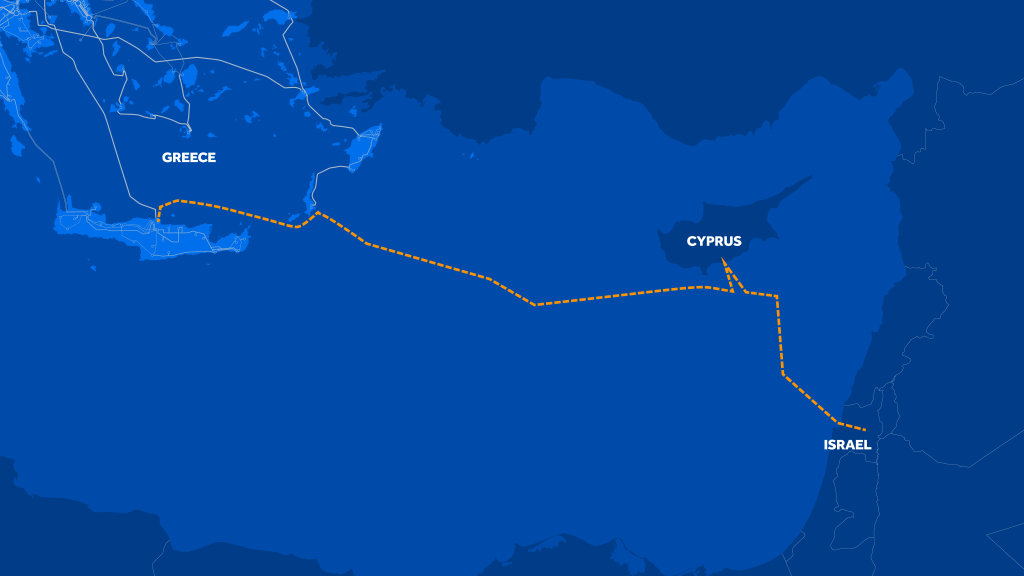
Strategic Importance of the Interconnection
The electricity interconnection holds significant strategic value. For Cyprus, it ends years of energy isolation and strengthens its EU integration. For Greece and Cyprus, it enhances their geopolitical position amid ongoing tensions with Turkey and other uncertainties in the Eastern Mediterranean. Meanwhile, Israel secures an alternative energy supply.
The project originated from the Cypriot-owned EuroAsia Interconnector, established in 2012 to drive the initiative. The concept was first presented to the Greek Ministry of Environment and Energy by the then-president of the Public Power Corporation (PPC), leading to initial approval and the launch of feasibility studies.
Early Setbacks and Renewed Ambitions
A tragic explosion at the Mari naval base in July 2011 highlighted Cyprus’ energy vulnerability, killing 13 people and destroying the nearby Vasilikos power station, causing prolonged blackouts.
This crisis, which led Cyprus to rely on electricity imports from the Turkish-occupied north, underscored the urgent need for energy security. In response, the PPC-led consortium Quantum Energy proposed the Greece-Cyprus-Israel interconnection project as an energy bridge between Asia and Europe, with an initial target completion by 2019.
The plan originally included the Crete-Attica interconnection. In September 2018, IPTO’s subsidiary, Ariadne Interconnection, was established to construct and finance this particular segment.
March 2021 marked a turning point, with Greece, Cyprus, and Israel signing a Memorandum of Cooperation in Nicosia. Shortly afterward, EuroAsia Interconnector applied for European Union funding through the Connecting Europe Facility (CEF) for the Crete-Cyprus segment.
By late 2021, IPTO was appointed as EuroAsia’s technical and operational consultant for the Crete-Cyprus link, strengthening the project’s credibility.
In January 2022, the European Commission approved a 657.9 million euro grant for the initiative. The then-Cypriot Minister of Energy hailed this funding as a breakthrough that would end Cyprus’ energy isolation.
Financial Struggles and Government Interventions
Two months later, the EuroAsia Interconnector project was officially inaugurated in Nicosia. However, in mid-July 2023, EuroAsia Interconnector requested an increase in financing to 1.9 billion euros from the regulatory authorities in Greece and Cyprus, citing cost overruns that threatened the project’s viability.
In summer 2023, EuroAsia Interconnector finally signed a long-delayed contract with the French Nexans for seabed surveys, cable design, production, and installation for the Crete-Cyprus link. However, shortly thereafter, EuroAsia Interconnector declared its inability to make the required advance payment to Nexans, further jeopardizing the project.
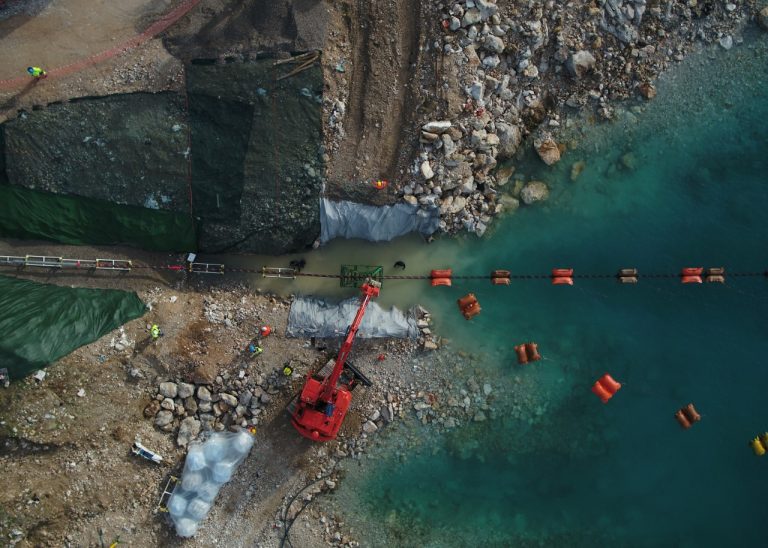
Faced with the risk of collapse, the Greek and Cypriot governments turned to IPTO, requesting that it assume responsibility for the project to safeguard both its completion and European funding. The European Commission endorsed this shift, affirming its confidence in IPTO’s ability to execute the project.
From October 2023 onward, with IPTO officially in charge, efforts to advance the now-renamed Great Sea Interconnector (GSI) intensified. Thirteen years after its inception, the project finally entered the implementation phase.
Challenges Persist
Construction of the first phase of the interconnection began in December 2023, with Nexans instructed by IPTO to secure production slots for the cables and initiate related procedures. However, the project encountered significant hurdles throughout 2024.
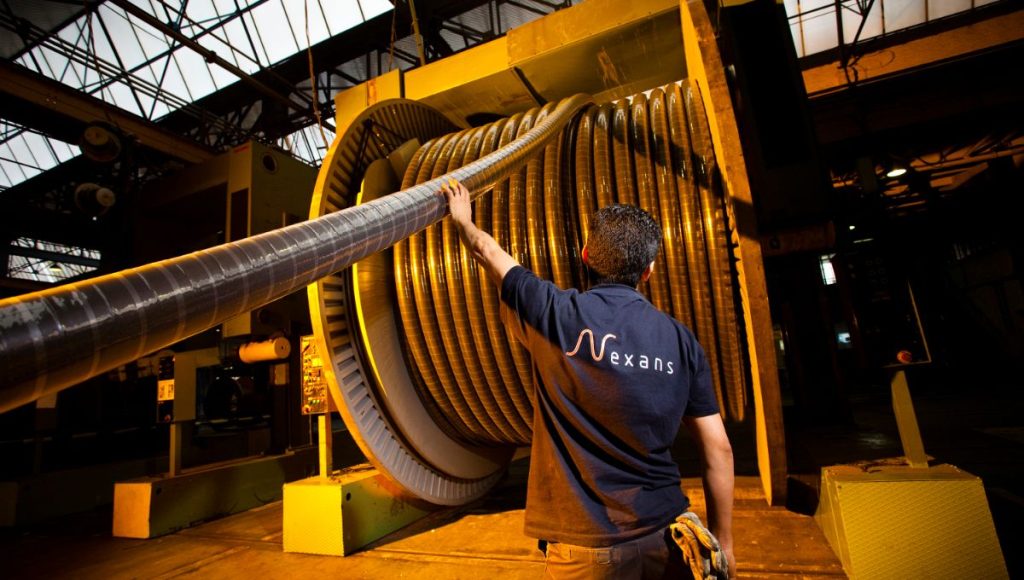
On July 2, the Cyprus Energy Regulatory Authority issued a ruling that upended the project’s financial framework, explicitly rejecting the recognition of a reasonable return, revenue, or cost recovery during the construction phase—before the interconnection became operational. This decision severely undermined the project’s viability.
Adding to the challenges, the Cypriot government failed to honor its commitment to acquire a stake in the Great Sea Interconnector, despite previously promising a decision by January 2024.
Following months of intense efforts by all parties involved, Greece and Cyprus signed a bilateral agreement in September 2024 to expedite the project’s progress. As part of this agreement, the July regulatory decisions were overturned, providing a sustainable foundation for the project’s continued development.
